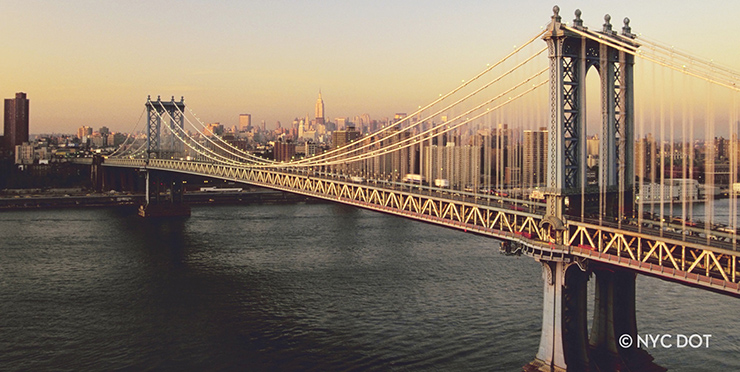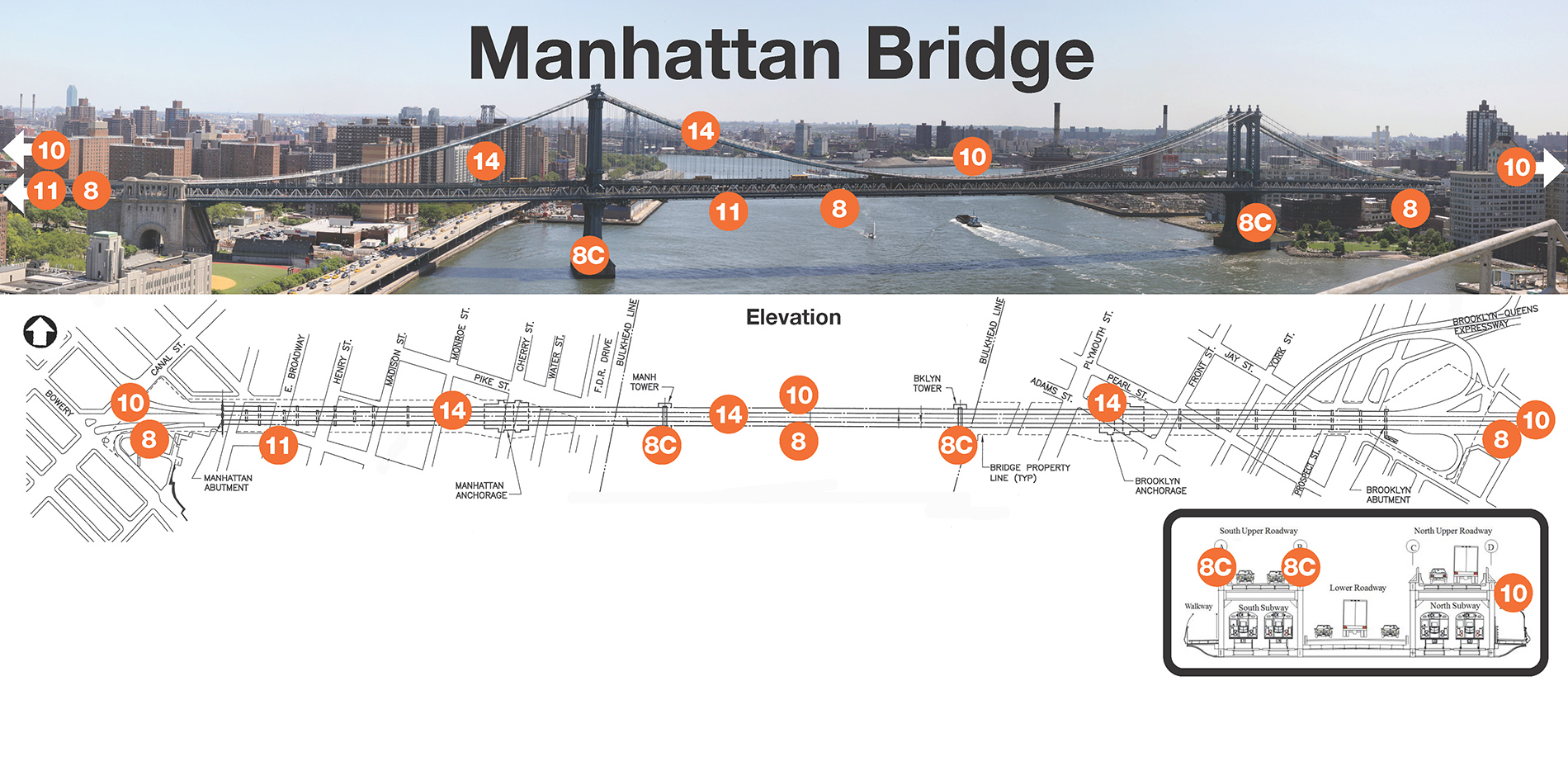Manhattan Bridge
About the Bridge
The Manhattan Bridge connects Chinatown in Lower Manhattan and Downtown Brooklyn. The bridge supports seven lanes of vehicular traffic, four transit train lines, a pedestrian walkway and a separate bikeway. As of 2018, an average of over 75,800 vehicles, 2,700 pedestrians and 6,200 cyclists travel over the Manhattan Bridge each day.

Bridge Facts
- Total length from abutment to abutment at lower level: 5,790 feet
- Total length from portal to portal on the upper roadway: 6,090 feet
- Main span: 1,470 feet
- Length of each of the four cables: 3,224 feet
History
The Manhattan Bridge was completed in 1909 and it is the youngest of the three NYC DOT East River suspension bridges. The bridge was designed by Leon Moisseiff (1872-1943), who also assisted in designing the George Washington and Robert F. Kennedy bridges. The Manhattan entrance to the bridge is distinguished by an elaborate stone portal and vast plaza, designed by the architectural team of Carrère and Hastings, which also designed the main branch of the New York Public Library.
The bridge was the first to be built based on deflection theory, a radical engineering theory at the time. This theory held that the inherent structure of suspension bridges makes them stronger than was previously thought. Consequently, the bridge does not have massive stiffening trusses like those used on the Williamsburg Bridge.
In 2009, the bridge's centennial year, the American Society of Civil Engineers named it a National Historic Civil Engineering Landmark. A bronze plaque commemorating this honor hangs on the south side path on the Brooklyn side of the bridge near the intersection of Jay and Sands streets.
Current Project
Structural and Component Rehabilitation
The Manhattan Bridge’s rehabilitation program continues under Contract 15. The project focuses on structural and component rehabilitation, as well as preservation of historic and architectural elements. Contract 15 began in November 2018 and is scheduled to be completed in September 2021.
Project Scope:
- Retrofit transit floor beams on approach spans
- Replacement or repair of tower ornamental features
- Rehabilitation of saddles, saddle housings and anchorage housings at the Manhattan and Brooklyn anchorages
- Rehabilitation of truss members to improve load ratings
- Rehabilitation of trench drains and deck joints on the south upper roadway
- Rehabilitation of existing fire suppression standpipe system
- Replacement of walkway railing panels
- Bridge walkway painting
Impact
- One lane on the lower roadway is closed
- Periodic lane closures on the south and north upper roadways
- The lower roadway travel direction reversed during closures of the south upper roadway
- Partial closures of the sidewalk and bikeway, although a five-foot width will be maintained at all times.
Construction Project Contact
For more information about this project, please contact Anita Navalurkar, the community liaison for the project, at manhattanbridgeoutreach@gmail.com or 646-942-3141.
Previous Contracts


8Contract 8 (1992-1997): Rehabilitation of the South Side Approach & Suspended Spans, $145M
8CContract 8C (1997-2001) : Painting of South Side Towers, Cables A & B, Interim Steel Rehab, $128M
10Contract 10 (2001-2004) : Rehabilitation of North Main Span, North Bikeway, Approach Tunnels, $195M
11Contract 11 (2005-2008) : Rehabilitation of Lower Roadway. Includes Manhattan Approach Spans, $156M
14Contract 14 (2010-2013) : Cable Re-wrapping, Necklace Lighting and Suspender Replacement, $160M
